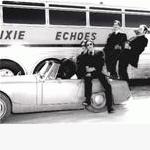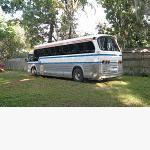| Author | Message | ||
| Craig Campbell (Craig_4104012)
Registered Member Username: Craig_4104012 Post Number: 37 Registered: 2-2009 Posted From: 72.61.241.36 Rating: N/A |
i have read most of the threads on this but i had never heard of using EDTA tetrasodium to de sulfate. i found this article in one of my back issues of home power magazine and i thought to repost it here. <<<<<<<<<<<<<<<<<copy>>>>>>>>>>>>>>>>>>> An Account of Lead Acid Battery Restoration Using EDTA Tetrasodium Jon Kenneke ©1996 Jon Kenneke After reading the several stories in Home Power describing how to “restore” lead-acid batteries, it was time to try it. Most lead acid batteries are disabled by a build-up of sulfur on the lead plates (sulfation). There are two methods to break sulfation: chemical (using EDTA tetrasodium), and electronic using a pulsed device that electrically breaks the bond. For this first try, chemical chelating agents are used. Refer to the article in Home Power #20 & #21 for details. EDTA tetrasodium is a chelating compound. This means that it has the ability to break crystal bonds. In this case, it is breaking the bond between the lead and the sulfate crystals. I collected six old lead-acid batteries as my test subjects. Two of these batteries are Exide, two are Sears Die Hard, one Les Schwab, and one Fred Meyer brand. They vary in age and usage. Five of the batteries were deep-cycle (Exide, Die Hard, Fred Meyer), and one was a standard car battery. I decided to use a car battery for comparison. After the test, four batteries came out usable. The Exide batteries were used in a bass fishing boat to run a 24 volt trolling motor. They were used in series. One of the Sears Die Hard batteries was used in a 12 volt trolling motor. The other Die Hard was used as an electric fence charger, drained to about 60 percent before charging. The Fred Meyer battery was used in an RV. Of course, the car battery was used in a standard automotive application. These batteries are not industrial quality units, like many renewable energy people use. But, they provide a good comparison for EDTA effectiveness. And, many folks do use “consumer” quality cells in their power systems. These batteries are cheap, and easy to get. Enough said. The three batteries used to drive trolling motors were deeply (80 percent or more) cycled, and cycled twice every weekend during the bass fishing season. They would sit in the off season, self-discharging. Some fisherman use trickle chargers, but the sources of these batteries did not. Hardly an ideal situation. The other batteries were charged on a consistent basis. I checked the specific gravity and voltages on all the batteries before applying EDTA tetrasodium and charging. The EDTA was obtained through Fisher Scientific, to guarantee purity. A 500 gram bottle was purchased for around 20 dollars. This bottle came factory sealed, and fully warranted to be pure. I obtained this through a local distributor. (See access section). The specific gravities of all the batteries indicated that they needed recharging—around 1.225 (less than the ideal specific gravity of 1.260). This was a good indicator of sulfation. As specified, 1 tablespoon of EDTA tetrasodium was added to every quart of electrolyte. The EDTA dissolved readily in distilled water. It was interesting to note that the battery cells fizzed after adding the EDTA. This was alarming. This happened in all the batteries, but did not seem to be an indicator of trouble. It is important to avoid contact with the electrolyte in batteries. I highly recommend using rubber gloves, and eye protection. I used eye protection, but no rubber gloves. I have acid burns as proof that avoiding contact with skin is VERY important. Please take heed to my advice. This can be a very safe procedure if you are prepared. Use your brain. After adding the EDTA, the batteries were gently shaken to thoroughly mix the EDTA with the electrolyte. This is an important step, as I have learned from previous experience. Be careful not to shake to batteries too hard and spill the acid electrolyte. Remember, acid can be neutralized with baking soda. Just make sure that none enters the battery cell. After the EDTA was added, all the batteries were charged at the C/10 rate. The EDTA treatment works best (according to literature) if the cells are put in an equalizing charge for 8 hours. At the end of this charge, the batteries could be heard “boiling”.Batteries After the equalization charge, the batteries were put on a standard charge for 12 hours. After this, cell voltage and specific gravity were measured again. The measured values are in the chart, below: Battery Use Voltage SG Notes Exide 1 Trolling 10.47 1.260 Cell cracked Exide 2 Trolling 13.20 1.260 Great Die Hard 1 Trolling 12.95 1.250 Pass Die Hard 2 Elec. Fence 13.10 1.255 Good LS Car Automotive 13.10 1.255 Good Fred Meyer R.V. 13.30 1.260 Great Exide number one developed a crack in the bottom of the case, and leaked over the floor of the garage. I did not try to revive this unit. Note that the final voltage is not with charge voltage applied. With the charge voltage applied (using a 120 VAC charger) that measured voltage was 14+ volts on all batteries except the leaky one. This is consistent with the recommended equalization voltage. As a true “acid” test, one of the Die Hard batteries was used for trolling on a bass fishing trip. Previously, the battery would start dying after one hour of use. After the treatment, no performance degradation could be detected until 4 hours into the trip. At this time, motor output came to a halt—a cell had shorted. To the recycle bin with this battery, and Exide number 1. The car battery is now used for occasional lighting in the greenhouse, and is kept charged by a 20 watt photovoltaic panel. It has maintained its output voltage for a winter and summer season. The load on this battery is a 30 watt light for 10 minutes nightly. Before the EDTA treatment, the battery held no usable charge. All the other batteries are used in a float service. This has encountered no problems, although they have not been deep load cycled. It would seem that thicker plate, industrial quality flooded lead-acid batteries would have batter results. In summary, the EDTA restoration was quite successful in these batteries. It is safe to say that EDTA gives extra life in batteries that are not physically damaged. It will be quite interesting to compare these chemical restoration results with electrical restoration. Access Author: Jon Kenneke, RFC Energy, 131 NW 4th St, Corvallis, OR 97330 • 541-740-8132 • Internet EMail: rfc@wetlabs.com EDTA Tetrasodium: HPC Scientific, Portland, OR • 503- 249-2184 <<<<<<<<<<<<<<<<<<<<end>>>>>>>>>>>>>>> | ||
| R.C.Bishop (Chuckllb)
Registered Member Username: Chuckllb Post Number: 673 Registered: 7-2006 Posted From: 70.212.134.131 Rating: N/A |
Interesting...helpful...do-able  Thanx, Craig! RCB | ||
| Dallas (Dal300)
Registered Member Username: Dal300 Post Number: 199 Registered: 3-2006 Posted From: 75.88.241.188 Rating: N/A |
I have used EDTA on a number of "dead" batteries in the past. One had been sitting dead on a concrete floor for a couple of years and the plates looked like they had been in a salt mine for a century. After a month of using the EDTA to mfg specs, the battery took a charge and as far as I know is still in service in our 1991 Buick that we sold a couple of years ago. | ||
| Austin Scott Davis (Zimtok)
Registered Member Username: Zimtok Post Number: 320 Registered: 9-2006 Posted From: 216.37.73.226  Rating: N/A |
I have a battery charger that is supposed to "recondition" the battery. It usually takes over 24hrs to go throught the cycle. But it seems to have worked on several batteries I have done it to. . | ||
| Paul Lawry (Dreamscape)
Registered Member Username: Dreamscape Post Number: 484 Registered: 5-2007 Posted From: 64.40.209.3  Rating: N/A |
How the heck can I bring back a couple of sealed group 31's back to life? ~Paul~ | ||
| Craig Campbell (Craig_4104012)
Registered Member Username: Craig_4104012 Post Number: 38 Registered: 2-2009 Posted From: 68.246.60.205 Rating: N/A |
Are they beat to the point where you would have to recycle them anyway? if they are get creative; drill holes in the place that seems to be the traditional locations. that is just my thought. now we need to figure out how to seal them back up. my efforts would be to get hydro caps to seal up. this may be folly but it is early and those are my thoughts on getting your 31s back. (Message edited by Craig 4104012 on May 06, 2009) | ||
| Jim Wallin (Powderseeker01)
Registered Member Username: Powderseeker01 Post Number: 17 Registered: 10-2008 Posted From: 67.40.129.84  Rating: N/A |
It's a good idea to replace the electrolite after this process. The chelation process breaks the crystal bonds, then the sulfication residue falls to the bottom of the battery,shorting the plates. | ||
| Dallas (Dal300)
Registered Member Username: Dal300 Post Number: 201 Registered: 3-2006 Posted From: 75.88.241.188 Rating: N/A |
Paul, There is usually a plastic strip that covers the fill/vent holes. Once you remove that strip you can pry up the covers with a thin screwdriver. | ||
| R.C.Bishop (Chuckllb)
Registered Member Username: Chuckllb Post Number: 680 Registered: 7-2006 Posted From: 75.208.1.175 Rating: N/A |
Jim...so, then, when one uses "dedsulfators" what happens?...(I do).... Thanx, RCB | ||
| Paul Lawry (Dreamscape)
Registered Member Username: Dreamscape Post Number: 487 Registered: 5-2007 Posted From: 64.40.216.17  Rating: N/A |
Dallas, Thanks I'll give it a try when I have time. Obviously we didn't get to stop and see you guys on the way back from Breaux Bridge, hopefully another time down the road. |